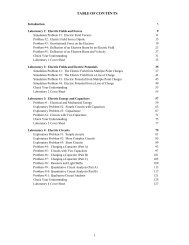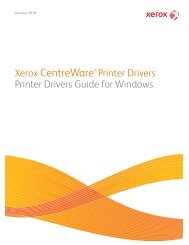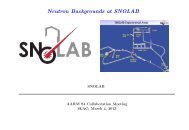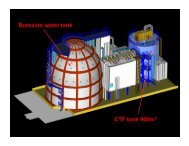PCI_PCIe User Guide_RevA.pdf - Symmetricom
PCI_PCIe User Guide_RevA.pdf - Symmetricom
PCI_PCIe User Guide_RevA.pdf - Symmetricom
Create successful ePaper yourself
Turn your PDF publications into a flip-book with our unique Google optimized e-Paper software.
1.3. Functional Description<br />
1.3.4. Time Coincidence Strobe Output<br />
The TFP provides one Time Coincidence Strobe Output signal. The Strobe output is like an alarm that<br />
is activated at some preprogrammed time. The Strobe time can be set from days through microseconds.<br />
The duration of the Strobe pulse is one microsecond. Two modes of operation are supported.<br />
In one mode (STRMODE=0), both the major and minor times are used to generate the Strobe.<br />
In the other mode (STRMODE=1), only the minor time is used to generate the Strobe output, producing<br />
an output pulse once each second. The Strobe is programmed using the CONTROL Register<br />
as described in "CONTROL Register (0x10)" on page 28.<br />
1.3.5. <strong>PCI</strong>(e) Interrupts<br />
The TFP supports the seven interrupt sources listed in Table 1. Each interrupt source can be individually<br />
masked off. Use the MASK register to mask on or off each interrupt source. Each interrupt<br />
source sets a corresponding bit in the INTSTAT register when the interrupt occurs. When servicing a<br />
TFP interrupt, the Interrupt Service Routine (ISR) in the driver reads the INTSTAT register in order to<br />
determine the interrupt source(s) requesting service.<br />
Table 1: TFP Interrupt Sources<br />
Int<br />
Interrupt Source<br />
0 Signal transition on Event Input has occurred (edge selected by EVSENSE)<br />
1 PPO edge has occurred (edge selected by EVSENSE)<br />
2 Time Coincident Strobe output rising edge has occurred<br />
3 One second epoch (1 PPS output) rising edge has occurred<br />
4 GPS data packet is available (bc637pci-V2 only)<br />
5 Signal transition on Event2 Input has occurred<br />
6 Signal transition on Event3 Input has occurred<br />
1.3.6. Additional Timing Output Signals<br />
The 1 PPS output is a 60 μsec wide pulse with the rising edge occurring at each 1 second epoch.<br />
A Time Code output signal is available in both AM and DCLS forms simultaneously.<br />
An output frequency of 1 MHz, 5 MHz, or 10 MHz (HCMOS) is selectable.<br />
1.3.7. AM Time Code Calibration<br />
The following AM Time Code calibration procedure is used to adjust the phase of the Time and<br />
Frequency Processor when operating in Time Code Mode and using an AM (amplitude modulated)<br />
- 21 -










